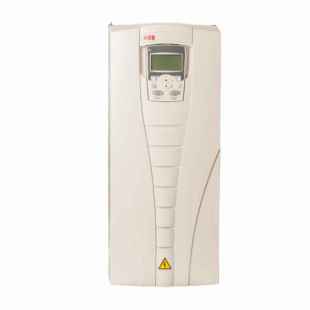This post will help you to work safely on variable frequency drive (VFD).

Safety instructions while working on a variable frequency drive
Only qualified electricians and engineers are allowed to install and maintain the drive.
Never work on the drive, motor cable or motor when main power is applied . After switching off the power, always wait for 5 minutes to let the intermediate circuit capacitors discharge before you start working on the drive, the motor or the motor cable.
Always ensure by measuring with a multimeter that:
- The voltage between drive input phases U1, V1 and W3, and the frame is close to 0 V.
- The voltage between terminals UDC+ and UDC- and the frame is close to 0 V.
Do not work on the control cables when power is applied to the drive or to the external control circuits. Externally supplied control circuits may cause dangerous voltages inside the drive even when the main power on the drive is switched off.
Do not make any insulation or voltage withstand tests on the drive or drive
modules.
When reconnecting the motor cable, always check that the phase order is correct.
Also, Note that
• The disconnecting device of the drive does not isolate the input cables and busbars from the main AC supply. Before working inside the cabinet, isolate the input cables and busbars from the main supply with the disconnecting device at the distribution board or with the disconnector of the supply transformer.
• The motor cable terminals on the drive are at a dangerously high voltage when the input power is on , regardless of whether the motor is running or not.
• The brake control terminals (UDC+, UDC-, BRK+, BRK- terminals) carry a dangerous DC voltage (over 500 V).
• Depending on the external wiring, dangerous voltages 115 V, 220 V ( or 230 V) may be present on the terminals of relay outputs RO1 to RO3.
Cover the drive when installing to ensure that dust from drilling or foreign objects does not enter the drive. Electrically conductive dust inside the unit may cause damage or lead to malfunction.
• Ensure sufficient cooling.
• It is not recommended to fasten the cabinet by welding.
• When removing the module from the cabinet and maneuvering it outside the cabinet, prevent it from toppling over by securing it. The drive module is heavy and has a high center of gravity.
The printed circuit boards contain components sensitive to electrostatic discharge. Wear a grounding wristband when handling the boards. Do not touch the boards unnecessarily.
Grounding
These instructions are intended for all who are responsible for the grounding of the drive. Incorrect grounding can cause physical injury, death or equipment malfunction and increase electromagnetic interference.
Ground the drive, the motor and adjoining equipment to ensure personal safety in all circumstances, and to reduce electromagnetic emission and pickup.
• Make sure that grounding conductors are adequately sized as required by safety regulations.
• In a multiple-drive installation, connect each drive separately to protective earth (PE).
• The grounding bolt must be removed when installing a drive on an ungrounded power system or a high resistance-grounded (over 30 ohms) power system.
• Power cable shields are suitable for equipment grounding conductors only when adequately sized to meet safety regulations.
Operation
These warnings are intended for all who plan the operation of the drive or operate the drive. Ignoring the instructions can cause physical injury or death or damage the equipment.
Before adjusting the drive and putting it into service, make sure that the motor and all driven equipment are suitable for operation throughout the speed range provided by the drive. The drive can be adjusted to operate the motor at speeds above and below the speed provided by connecting the motor directly to the power line.
• Do not activate automatic fault reset functions if dangerous situations can occur. When activated, these functions will reset the drive and resume operation after a fault.
• Do not control the motor with the disconnecting device (disconnecting means); instead, use the control panel keys and, or commands via the I/O board of the drive. The maximum allowed number of charging cycles of the DC capacitors (i.e. power-ups by applying power) is five in ten minutes.
If an external source for start command is selected and it is ON, the drive will start immediately after fault reset unless the drive is configured for 3-wire (a pulse) start/stop.